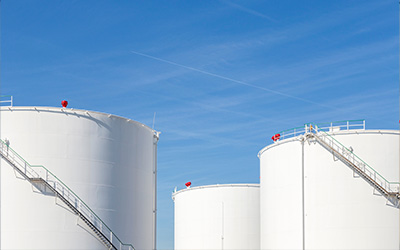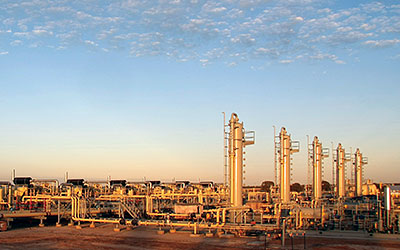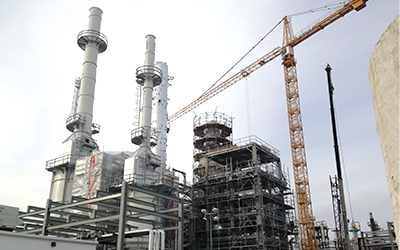Case History
Boosting Safety & Efficiency: Innovation for Clearing of Amine Units
Solution reduces harsh chemicals used and number of steps.
CHALLENGE
Frequent servicing is necessary for Amine Units amid several chemical hazards.
SOLUTION
- Use FQE products to expose and pacify pyrophoric iron sulfides for a safer and faster turnaround while degassing and clearing.
RESULTS
Able to clear and clean unit in timely manner, typically 4-6 hours
No acids used
No alkaline scrubbing or neutralization required
No exothermic oxidizers
No H2S generated
No neutralization of cleaning
chemistries
Risk Removed
Using a procedure that eliminates the need for workers to handle concentrated acids and bases removes the risk, the regeneration of H2S. The cleaning can be done totally in situ for a safer and faster result.
CHEMICALS UTILIZED
Regular Servicing Essential for Amine Units
Amine units commonly require periodic removal from service for maintenance or inspection. Refinery sites often have numerous units, emphasizing the importance of ensuring a safe and straightforward process for clearing and cleaning these units. Typically, these units can be designed with considerable height, ranging from 50 to 60 feet, and narrow diameters of around 5 feet, posing challenges and making them less than ideal for effective cleaning or manned entry. Moreover, these units may incorporate trays or packing, occupying a significant portion, sometimes up to half, of the interior volume. The foulants present in these units include pyrophoric iron sulfide, flammable gases such as hydrogen sulfide and benzene, along with noxious gases like ammonia
Patented Technology Eliminates Bottlenecks, Simplifying Process
Leveraging FQE’s patented LEL-Surface technology to utilize plant steam proves effective in eliminating embedded hydrocarbons from the intricate geometry of
the unit and the extensive surface area of the packing. Once the surfaces previously saturated with hydrocarbons are exposed, applying FQE’s Pyrophoric solution becomes crucial for neutralizing pyrophoric iron sulfides, all without the need for an exothermic heat-generating oxidizer. With precise application, activated steam ascends the tower and reflux descends treating low points in the trays, the entire treatment process can be accomplished within four to six hours. This efficiency translates to significant time savings enabling prompt completion of maintenance and inspection, swiftly returning the unit to operational status
Steam Plus Patented Chemical Solution Cuts Time to 4-hours
An amine unit with a height of 55.5 feet tall and a diameter of 5.5 feet (1320 ft3) needed to be serviced. The amine unit contains packing (vol 605 ft3) while also including a coalescer demister. The contaminants were pyrophoric iron sulfide at 100 ppm along with LELs of <5% which contained benzene and hydrogen sulfide; additionally, ammonia (NH3) is present. FQE LEL-Surface and Pyrophoric were injected through a 2-inch steam line with an established reflux as the application temperature reached 150°F/65°C. After 4-hours the unit was successfully cleared and cleaned.
Moving Past Field Experiments of Acid Base Chemistry
The outdated practice of employing acid to treat amine units results in the generation of acid gases, requires scrubbing, and contributes to the production of corrosion byproducts and hydrogen sulfide. Using acid for these purposes also mandates neutralization with concentrated alkaline bases, requiring subsequent water flushes. Additionally, the utilization of an exothermic oxidizer involves a heat-generating process, produces additional solid byproducts equivalent to 50% of cleaning chemicals for disposal that contain heavy metals.
Moreover, the use of plastic for trays imposes temperature limitations, with elevated temperatures potentially causing plastic deformation or melting. It is imperative to adopt a superior chemical solution to reduce reliance on heat cleaning energy, emphasizing the predominant use of work and chemical energy for effective cleaning.



